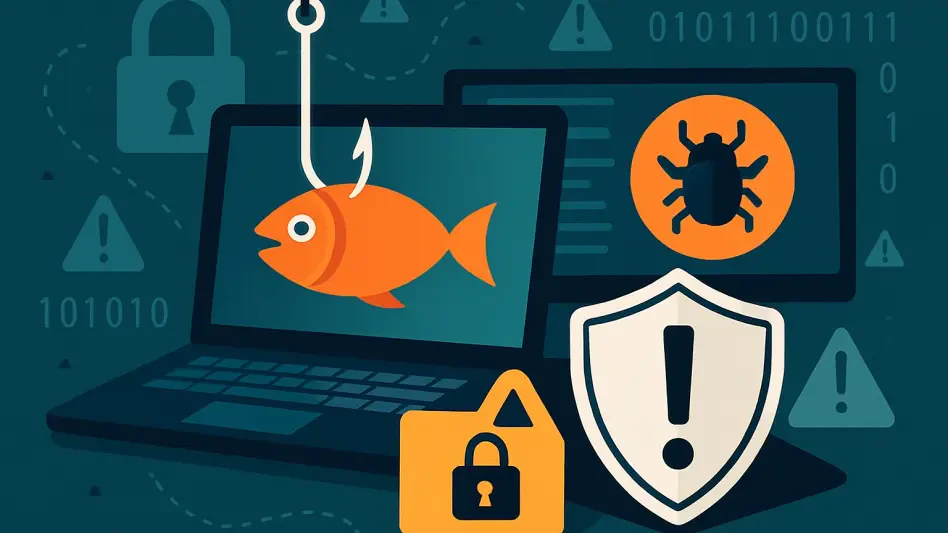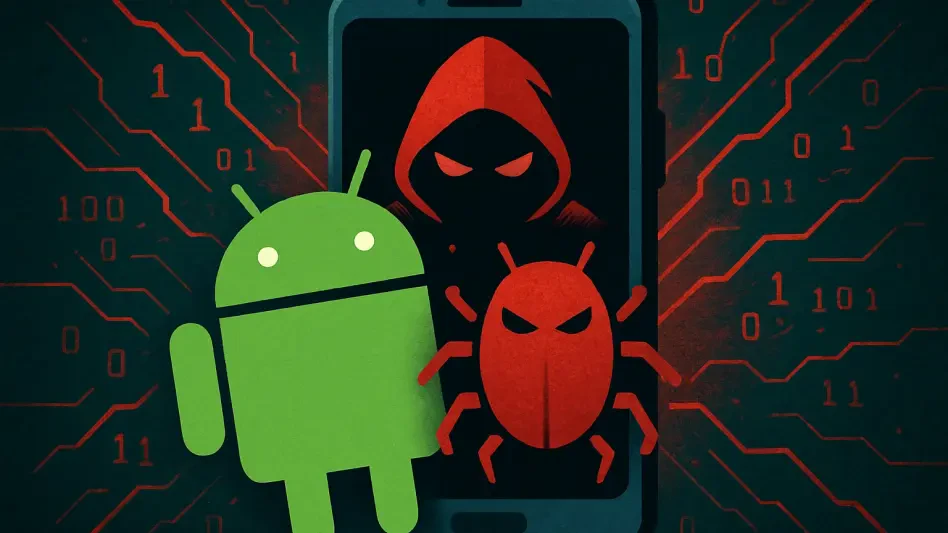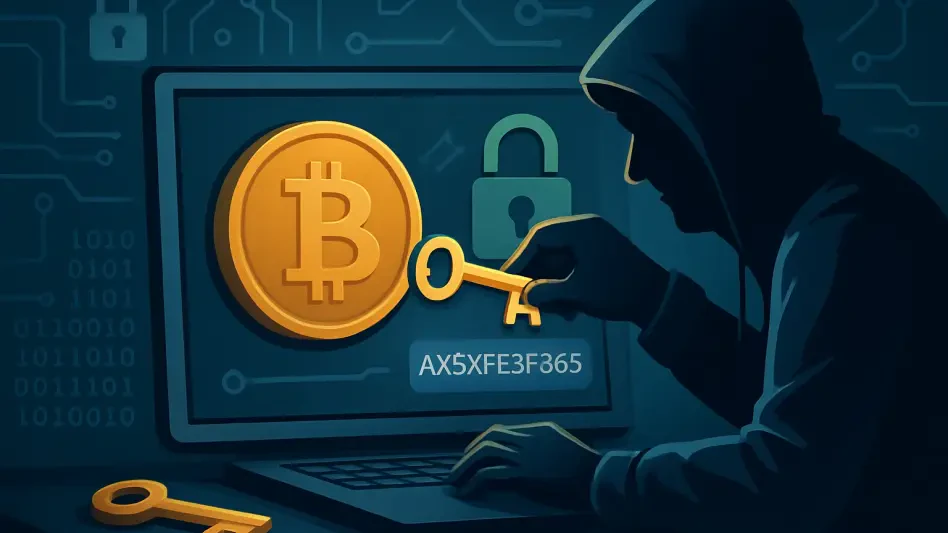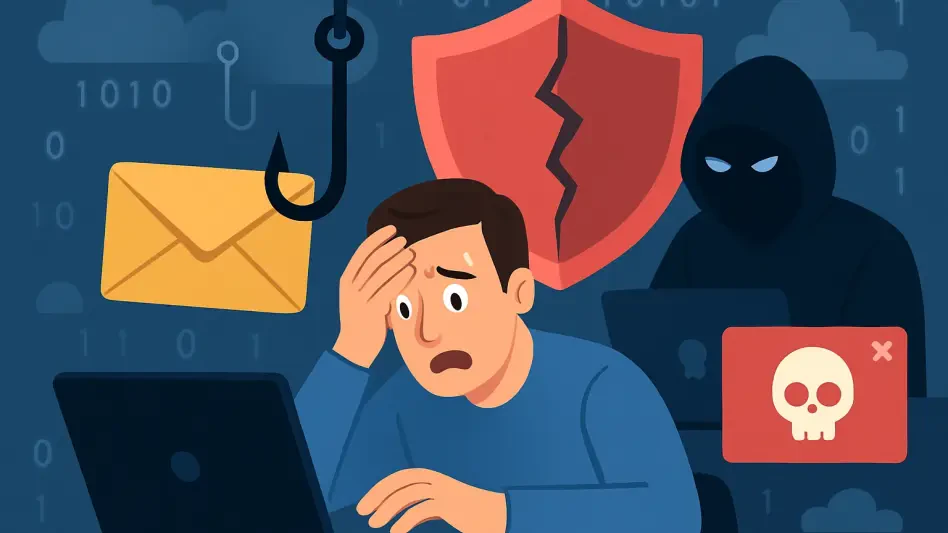Imagine opening an email that looks exactly like a message from a trusted bank, complete with familiar logos and urgent language demanding immediate action to secure an account, only to realize too late that it was a cleverly disguised trap set by cybercriminals. Cyber scams have become an unrelenting part of digital life, preying on unsuspecting individuals with increasingly sophisticated tactics. As Cybersecurity Awareness Month highlights the importance of staying vigilant, the need to understand and combat these threats has never been more critical. Phishing, smishing, and vishing represent just a few of the deceptive strategies scammers use to exploit trust and steal sensitive information. With a staggering 73% of U.S. adults encountering some form of online scam, according to Pew Research Center data, the scale of this issue touches nearly every household. This pressing reality demands actionable strategies and robust tools to protect families from falling victim to these digital predators in an ever-evolving landscape.
Unpacking the Threat of Modern Cyber Scams
The pervasive nature of online scams paints a sobering picture of the digital world, where fraudulent communications infiltrate daily life through multiple channels. Data reveals that 36% of Americans have purchased fake or undelivered products without refunds, while 29% have had online accounts compromised. Another 24% have unknowingly shared personal details due to deceptive messages, and a significant portion—22%—have faced multiple types of scams simultaneously. These numbers underscore how cybercrime spares no demographic, targeting individuals with relentless precision. Emails, texts, and phone calls serve as common entry points for scammers who exploit human vulnerabilities like trust and urgency. The sheer volume of these attacks, often arriving weekly for many, highlights the importance of recognizing the signs early. Staying ahead of such threats requires not just awareness but a proactive mindset to question every unsolicited interaction in the digital space before taking any action.
Beyond the statistics, the evolution of scam tactics adds another layer of complexity to this ongoing battle. Scammers now leverage advanced technologies, such as artificial intelligence, to craft messages that mimic legitimate communications with uncanny accuracy. From emails impersonating major brands to texts posing as urgent delivery updates, the level of personalization can be startling. Reports indicate that 37% of global email spam targets the U.S., with nearly half of it being malicious. This sophistication often blurs the line between genuine and fraudulent, making traditional detection methods less effective. The emotional manipulation embedded in these scams—whether through fear or a false sense of security—drives individuals to act hastily, often with devastating consequences. Understanding that no platform is immune to these threats is the first step toward building a defense that can adapt to the ever-changing strategies employed by cybercriminals.
Decoding the Types of Phishing Threats
Phishing remains one of the oldest yet most persistent forms of cyber deception, evolving into a highly refined art form with the aid of modern tools. These email-based scams often replicate the tone, language, and branding of trusted entities like Microsoft or Amazon, making them nearly indistinguishable from authentic correspondence. The use of AI to generate convincing content has only heightened their effectiveness, tricking even the most cautious users into clicking malicious links or sharing sensitive data. With 45% of spam emails in the U.S. classified as malicious, the risk is both widespread and constant. Protecting against phishing requires a keen eye for subtle red flags, such as unexpected urgency or slight discrepancies in email addresses. Staying informed about the latest impersonation tactics can significantly reduce the likelihood of falling for these traps in an increasingly crowded inbox.
Smishing and vishing represent the next frontier of scams, extending deception into mobile and personal communication channels with alarming success. Smishing, or SMS-based fraud, has surged as scammers target users with urgent texts posing as banks or delivery services, often personalized to seem credible. Recent data shows that 10% of U.S. users have received at least one scam text in recent months, a trend that exploits the immediacy of mobile devices. Vishing, on the other hand, takes a more intimate approach, using AI-generated voice cloning to mimic loved ones or authorities. These calls prey on emotional triggers, demanding quick action like money transfers under the guise of emergencies. Both methods thrive on creating panic, leaving little time for reflection. Combating these threats means adopting a habit of pausing to verify the legitimacy of any unsolicited message or call, no matter how convincing it may initially appear to be.
Building a Scam-Free Defense at Home
Creating a secure digital environment starts with family-wide education and open communication about the risks lurking online. Discussing suspicious messages or calls as a household can foster a culture of skepticism, ensuring that no one acts impulsively on unverified communications. Teaching younger members to recognize common scam tactics—such as urgent demands or unfamiliar links—equips them with critical thinking skills for navigating the internet safely. Additionally, staying updated on emerging threats through reliable resources helps everyone remain vigilant against new deception strategies. This collective approach transforms individual caution into a shared responsibility, making it harder for scammers to exploit gaps in awareness. Emphasizing the importance of pausing before responding to any unexpected contact can serve as a powerful first line of defense against the emotional manipulation often used in these attacks.
Complementing education with robust security tools forms a comprehensive strategy to outsmart even the sneakiest scams. Solutions like antivirus software with real-time protection and advanced anti-phishing features can detect and block malicious attempts before they reach users. Tools designed to scan links or identify scams across platforms provide an extra layer of safety, especially for those less familiar with digital red flags. Monitoring services that alert users to data breaches also empower quick responses to potential exposures, minimizing damage. Integrating these technologies with personal habits, such as verifying every unsolicited interaction, creates a multi-faceted shield against cyber threats. Families should prioritize securing all devices, from smartphones to laptops, to ensure no entry point is left vulnerable. This blend of human caution and cutting-edge protection offers a dynamic way to stay ahead of scammers in a landscape that continues to evolve.
Empowering Future Vigilance
Reflecting on the persistent dangers of phishing, smishing, and vishing, it becomes evident that awareness and preparation are key to safeguarding digital lives. The sophistication of these scams, driven by technological advancements, has challenged traditional defenses, but families who embrace proactive measures stand stronger against deception. By fostering open dialogue about suspicious communications and integrating trusted security tools, many have successfully thwarted attempts to exploit their trust. The focus on pausing to verify every unsolicited contact proves to be a simple yet effective tactic in avoiding emotional manipulation. As Cybersecurity Awareness Month reminds everyone of these risks, the commitment to staying informed about evolving tactics has laid a foundation for resilience. Moving forward, adopting a mindset of continuous learning and leveraging advanced protective solutions will ensure that households remain equipped to navigate the digital world confidently and securely.








